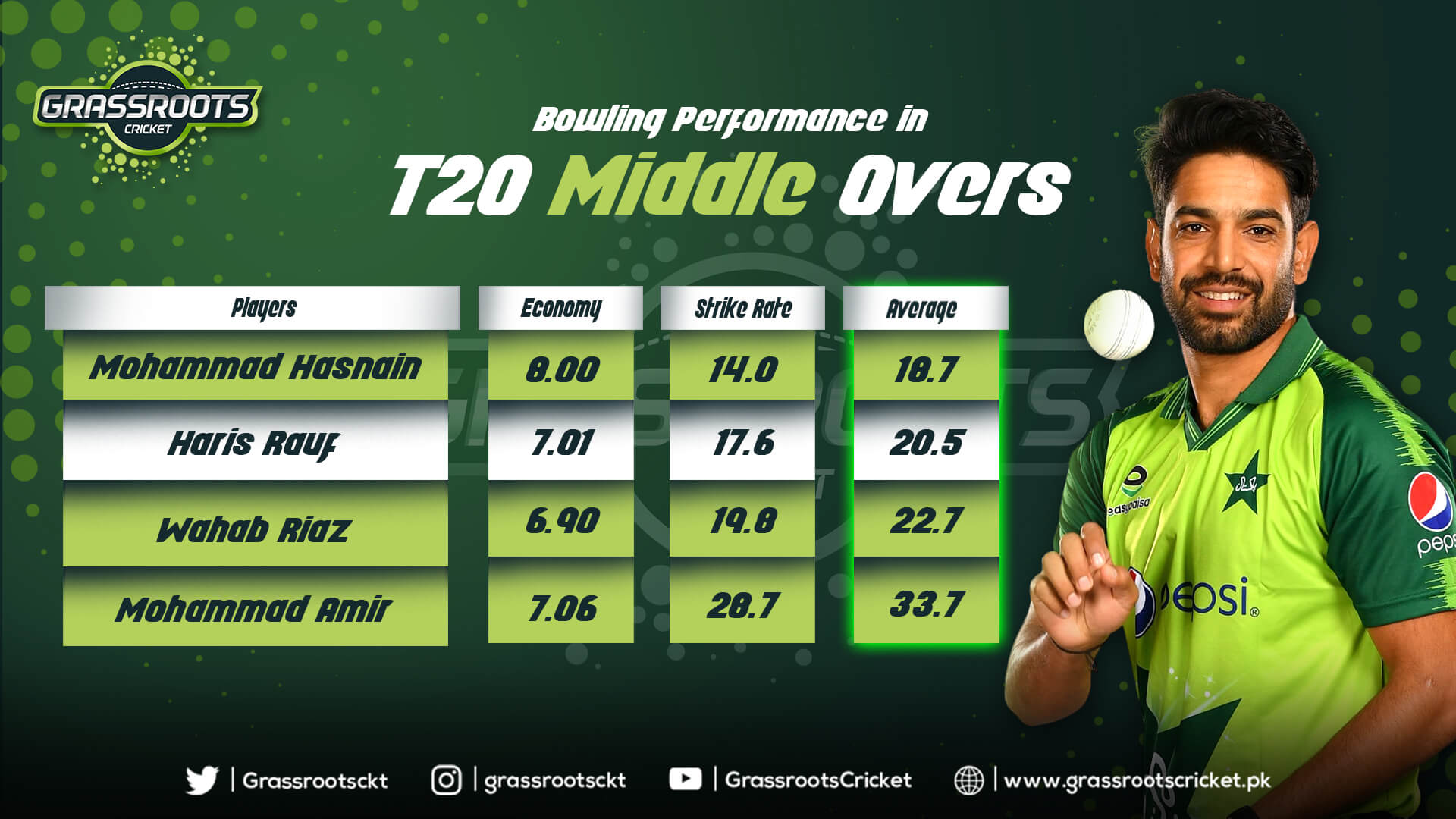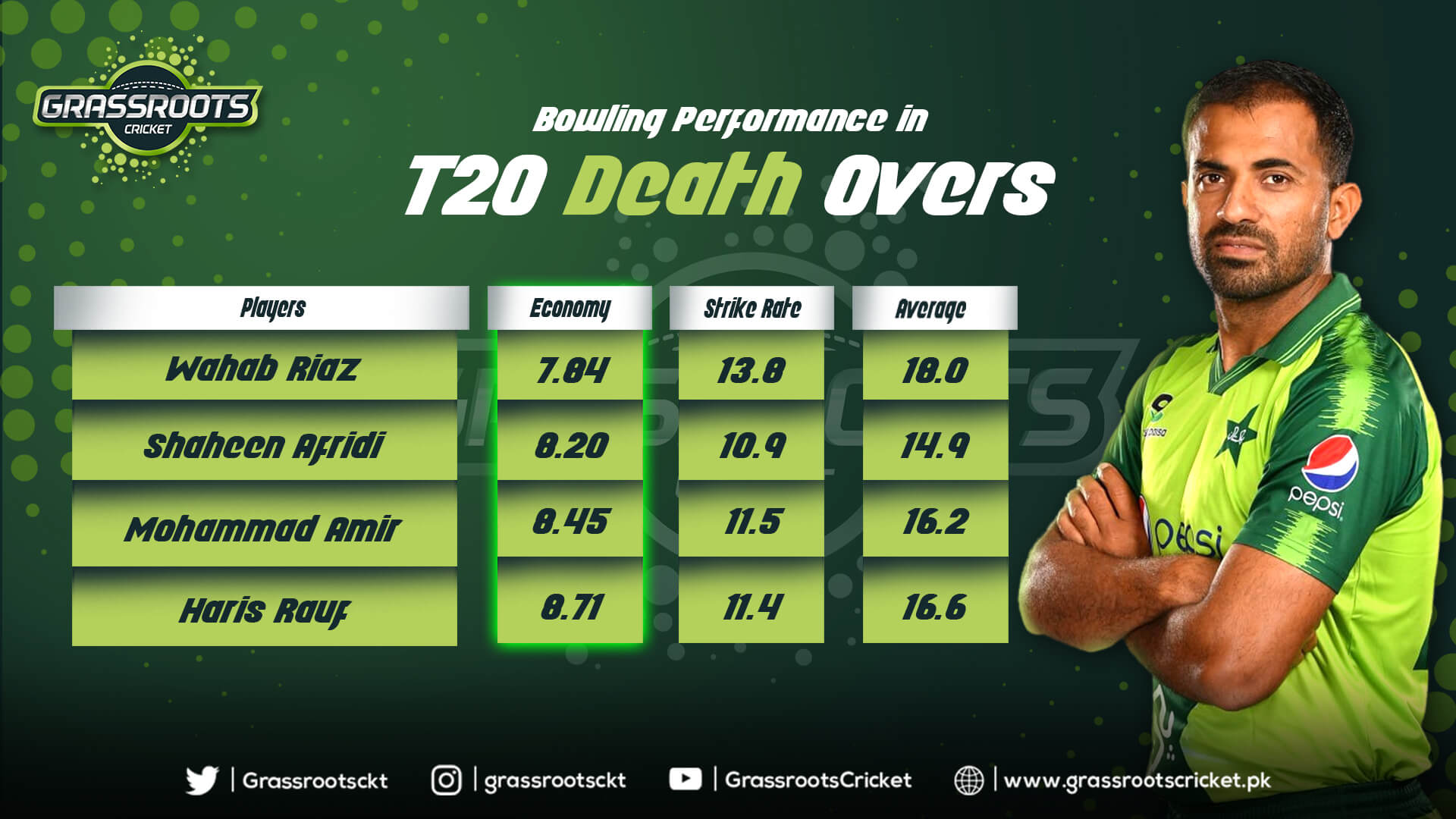
Does Pakistan Need Amir
Does Pakistan really need Mohammad Amir in the T20I side?
With Mohammad Amir announcing his retirement from international cricket (for now), it’s worth asking the question: Does Pakistan need him in the shortest format?
You can divide a T20 innings into 3 phases: the Powerplay, the Middle Overs, and the Death. The traits needed for a bowler to succeed vary from phase to phase. Likewise, the way we assess a bowler’s effectiveness also varies from phase to phase.
Powerplay
In the powerplay, you would concentrate on his strike rate, i.e., the average number of balls needed to take a wicket, because powerplay wickets are like gold dust. If a team takes three or more wickets in the powerplay, they win 70% of their games. Pakistan is lucky to possess arguably the best powerplay bowler in the world in Shaheen Shah Afridi. The question is, who will partner him?
Imad Wasim has bowled in 46 innings in T20Is; he has opened the bowling in 34 of those innings. In the 9 games he has played under the captaincy of Babar Azam, he has opened the bowling in 8 innings. He does have one very obvious chink in his armor – left-handers. Against right-hand batsmen in T20Is, Imad Wasim has an economy of 5.60 and an average of 18.5; those numbers rise to 7.62 and 32.5 respectively when faced with a left-hand batsman. Imad Wasim’s overall powerplay strike-rate is 28.7.
In recent times, Mohammad Amir has been criticized for not being able to take wickets with the new ball, i.e., powerplay wickets. It is a criticism he has seemingly taken to heart, and this year, there has been a massive improvement in his powerplay bowling:
Year – Powerplay Strike-Rate (T20)
2015 – 17.0
2016 – 45.0
2017 – 24.0
2018 – 54.0
2019 – 31.5
2020 – 26.0
This year has been the best Amir has bowled in the powerplay since the early days of his comeback to international cricket.
A Case Study: Australia vs. Pakistan, 2nd T20I, 2019
Defending 151, Pakistan opened the bowling with Imad Wasim. The opening combination was David Warner and Aaron Finch. As you probably know, David Warner is a left-hander; he faced all 6 balls of Imad’s opening over and promptly hit 4 fours with the over costing Pakistan 16 runs. Mohammad Amir was brought on in the next over; he rattled Warner’s stumps on his fifth ball. Imad Wasim conceded only 18 runs in his next 3 overs and trapped Ben McDermott in front of the stumps. Why? Because the next Australian left-hand batsman after Warner was Ashton Agar batting at number 7.
Haris Rauf in T20s has a strike-rate of 22.8 in the powerplay, but he tends to be expensive – economy 9.32.
Those are, more or less, the candidates to partner Shaheen with the new ball. Solely, on these numbers, Amir may be in the ascendency. Unfortunately for him, the powerplay only lasts 6 overs, and Imad has an extra string in his bow – batting. It is difficult for a specialist bowler to play solely on his prowess in the powerplay; he needs to be effective in other phases of the innings.
Middle Overs
To be effective in the middle overs of a T20 inning, you either have to bowl leg-spin or have the pace to bowl a hard length. While wickets are important in this phase, runs are also a factor. Thus, bowlers can be assessed in this phase according to their average, i.e., average runs conceded per wicket. Once again, Amir finds himself competing with Haris Rauf. Only this time, it’s Haris who triumphs. Haris has the pace and the ability to succeed in the middle overs, and his numbers suggest he does. Haris has a bowling average of 20.5 and an economy of 7.02 in the middle overs in T20s compared to Amir’s 33.7 and 7.06, respectively. He’ll keep it tight but won’t specifically give you wickets.
Wahab Riaz’s role in the team is to bowl at the death, but you can’t bowl all four of your overs at the death. His middle overs average is 22.7, with an economy of 6.90. Mohammad Hasnain’s middle overs average is 18.7, with an economy of 8.00. He remains a work in progress as far as his powerplay and death bowling is concerned, so he can’t as of yet demand a regular place in the XI. However, he once again proves what succeeds in the middle overs – pace.
Amir’s lack of effectiveness wouldn’t have usually troubled teams who picked him in the past because he is known as a Top-Tail bowler in T20s, i.e., someone who gives you two overs at the top and then two overs at the death. The fact is that bowling in the middle overs is not his job.
Death
When assessing a bowler’s effectiveness at the death, their economy is the first thing to look at. Wickets at the death rarely have much value; they are effectively glorified dot balls. Amir has always had a reputation of being a dependable bowler at the end, a reputation he enhanced this year when he bowled a superb super over to take Karachi Kings to the final. But while his powerplay bowling has improved this year, his death bowling may have, worryingly, declined.
Year – Death Economy (T20s)
2015 – 7.48
2016 – 8.00
2017 – 7.37
2018 – 7.67
2019 – 8.79
2020 – 9.64
Pakistan’s first-choice death bowlers as of now are Wahab Riaz and Shaheen Afridi; their economies in T20s are 7.84 and 8.20, respectively. With Shaheen being so effective with the new ball, there will be times when the captain will want to continue bowling him in pursuit of more wickets when Pakistan inevitably collapses to a par score. In those situations, he will need to bowl his 3rd fast bowler at the death with Wahab. Haris Rauf’s death economy is 8.74. While that isn’t great, it’s still better than what Amir has been delivering in the past two years.
So, Where Does Amir Stand?
The decline is there for all to see. Amir may no longer be able to call himself a Top-Tail bowler. His numbers in the recent past are actually quite similar to the overall figures of a journeyman T20 specialist – Sohail Tanvir. Tanvir’s powerplay strike-rate is 28.1, middle-overs average 30.0, and death economy 9.01. Tanvir hasn’t played an international T20 since 2017. It’s clear that selectors don’t value his type of bowling.
That being said, if Amir was to combine his 2020 powerplay self with his 2017/18 death self, he would be an automatic pick for any side in the world, including Pakistan. But even his recent overall numbers have been disappointing. In his last 20 T20 matches, Amir has managed 17 wickets at an average of 34.8 and an economy of 8.14. His T20I numbers since October 2019 are 4 wickets in 8 matches at an average of 49.3 and an economy of 8.21.
Verdict
You can make a case to play all four fast bowlers – Shaheen, Wahab, Amir, and Rauf, thereby covering all the bases. However, the batting may suffer. As of now, Pakistan seems to want to play three pacers plus the two spin-bowling all-rounders – Shadab and Imad. If one of the five frontline options were to get attacked, part-time bowlers like Hafeez, Iftikhar, and Khushdil would have to get through one or two overs.
If Pakistan is to go in with a 4th pacer, he will most likely be an all-rounder – Faheem Ashraf, Amad Butt, or Aamer Yamin. Faheem’s powerplay strike-rate in T20s is 27.0, while Yamin’s is 28.2. That’s not better than Amir’s this year, but they can add 10-20 runs with the bat too, which could decide the game. Batting depth allows the batsmen to play with greater freedom at the top of the order, allowing Pakistan to get higher scores.
At his best, Amir is a sight to behold; banana swing at the top, cleverness in the middle, and accurate wide yorkers at the death. At his best, Shaheen is the only one who matches him in T20s for Pakistan. The question is, when or if we will ever see his best again…










Leave a Reply